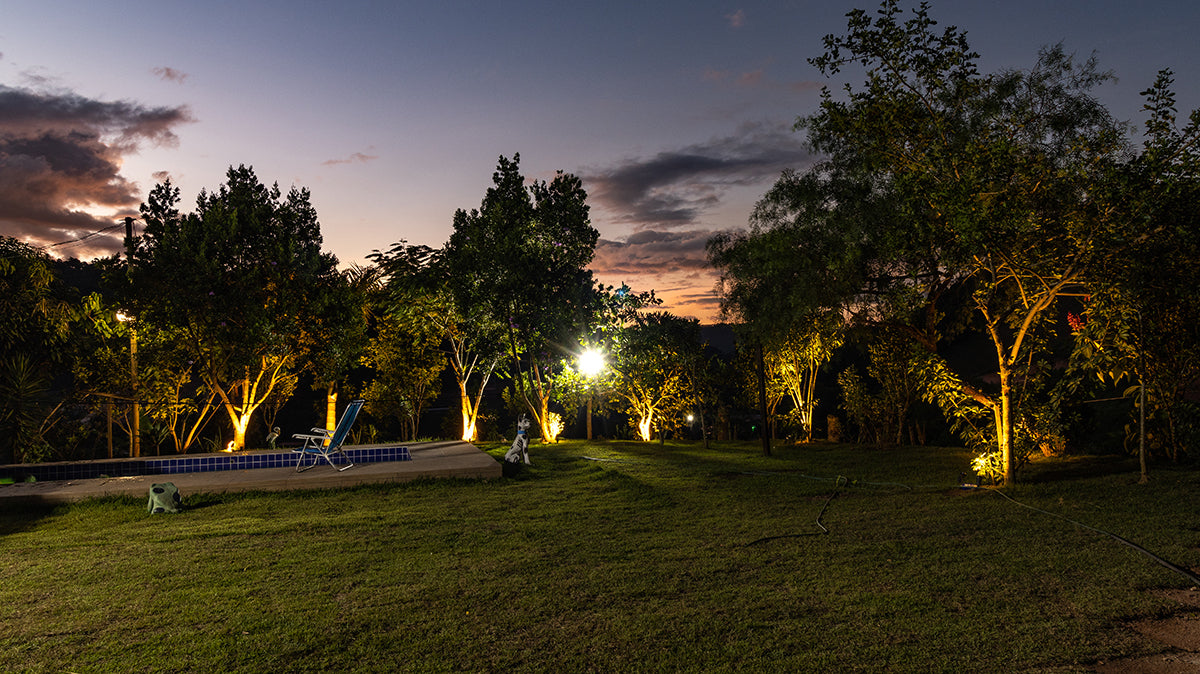Landscape Lighting Techniques for Trees
Introduction
Lighting your landscape can transform your outdoor spaces, turning them into stunning visual spectacles and enhancing their functionality after dark. One of the most impactful ways to achieve this transformation is through landscape lighting for trees. Whether you're a professional landscape lighting installer or a homeowner looking to elevate your garden, understanding the various techniques and considerations for tree lighting is essential. In this guide, we’ll delve into the intricacies of tree lighting, covering techniques, important factors, and tips to create breathtaking outdoor environments.
Why Light Trees?
Tree lighting serves multiple purposes. It adds visual interest and depth to your property, enhances curb appeal, and increases security by extending your field of vision. Lighting trees along driveways, around the yard's perimeter, or highlighting specific trees can create a welcoming atmosphere and make your home safer.
Landscape Lighting Techniques for Trees
There are two primary techniques used by landscape lighting specialists to illuminate trees: uplighting and downlighting. Both techniques offer unique effects and can be used individually or combined for more complex designs.
Uplighting Trees
Uplighting involves placing lights at ground level and directing them upward towards the tree. This method is ideal for drawing attention to the tree itself and creating dramatic effects.
- Small Deciduous Trees: Use a single accent light with a 40° beam angle to graze the trunk and illuminate the canopy.
- Medium Deciduous Trees: Employ cross-lighting with two 40° lights positioned to highlight the canopy.
- Large Deciduous Trees: Combine a 12° accent light at the base with several 40° or 60° lights pointing into the canopy for full illumination.
- Large Fir Trees: Use two 60° accent lights placed at a distance to light up the tree from multiple sides, creating a 360° effect.
Downlighting Trees
Downlighting, also known as moonlighting, involves placing lights high in the tree and directing them downward. This technique simulates natural moonlight, creating a soft, ethereal glow and interesting shadow patterns on the ground.
- Large Deciduous Trees: Place a 60° accent light 20-25 feet up the tree, pointing downwards to create shadows and light patterns on the ground.
Combining Uplighting and Downlighting
In some cases, combining both techniques can achieve a more dynamic look. For instance, uplighting can highlight the structure of the tree, while downlighting can create ambient light for surrounding areas.
Important Considerations for Lighting Trees
To achieve the best results, consider the following elements when planning your tree lighting:
Number & Placement of Lights
- Tree Size: Larger trees may require multiple lights to ensure full coverage.
- Viewing Angles: Consider the angles from which the tree will be viewed. For maximum curb appeal, ensure the tree is illuminated from multiple angles if necessary.
Color Temperature
- Warm Light (Under 3000K): Highlights the warm colors in the bark and branches.
- Cool Light (Over 4500K): Enhances the greens in the leaves and needles, especially effective for evergreens.
Beam Angle
- Wider Trees: Require wider beam spreads to cover their breadth.
- Taller, Narrow Trees: Benefit from narrower beam spreads to focus the light upward.
Lumen Output
- Brightness: Depends on personal preference and design goals. Brighter lights create dramatic focal points, while softer lights offer a more inviting glow.
Tips for Effective Tree Lighting
Uplighting
- Placement: Position lights close to the base for small trees and further away for larger trees to create different effects.
- Angles: Adjust the angles to highlight the tree's best features and create contrasts.
- Viewing Angles: Ensure the tree looks good from all important perspectives.
Downlighting
- Height: Mount lights high enough to create natural-looking shadows.
- Direction: Experiment with the direction to achieve the desired lighting pattern on the ground.
Conclusion
Landscape lighting for trees is a sophisticated art that combines technical knowledge with creative design. By understanding and applying the techniques of uplighting and downlighting, and considering factors like color temperature, beam angle, and lumen output, you can create stunning outdoor environments that enhance both the beauty and security of your property.
For more detailed information and to find the best lighting solutions, visit Americana Outdoor Lighting. Whether you're looking to find a dealer or become a dealer, Americana Outdoor Lighting offers a wide range of products and resources to meet your landscape lighting needs.


